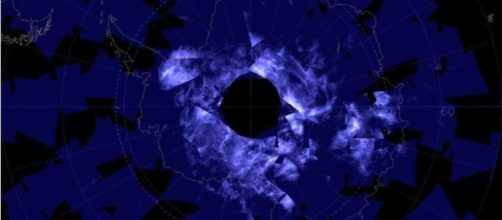The highest clouds in the sky-Noctilucent clouds were observed by NASA´s Aeronomy of Ice in the Mesosphere (AIM). These types of clouds are usually seen in between the 50-70° latitudes in the summer, either in the northern or the southern parts of the world. During the southern summer season, which starts in November in the southern latitudes, AIM pointed towards them, catching the electrifying blue tints from these clouds.
Polar mesospheric clouds
These types of clouds are some of the highest in the sky and they are formed of icy crystals that condensate into diminutive particles from meteorites and water vapor.
They form in the mesosphere and range in height from 75-85 km (47-53 miles). They are usually seen during the summer months, at latitudes 50-70° north or south of the equator. The polar season starts in mid-May and mid-November in the northern and southern hemispheres, correspondingly. They can be easily seen during twilight, when the sun is below the horizon, either at dawn or dusk.
How do they form
Scientists think that these clouds do not form in the same way as lower atmospheric clouds do, but that the cloud´s small particles condense on seeds of meteoric or volcanic origin. The brightest clouds are known to be composed of water crystals and their lifetime expectancy is determined by temperature, solar activity, water vapor and atmospheric chemistry and the particle seeds in which they form.
It´s believed that an increase in water vapor and colder temperatures might be the cause of these clouds appearing so frequently in the high sky.
AIM
This is a satellite whose mission is to study noctilucent clouds. AIM was placed in a polar orbit for this mission and is equipped with three scientific instruments for this purpose. It studies the factors (temperature, dust and water vapor) that cause the formation of noctilucent clouds. Four cameras will measure the position and size of the particles that compose the clouds; a cosmic dust detector and an instrument for measuring the cloud´s temperature, particles and atmospheric gases.

